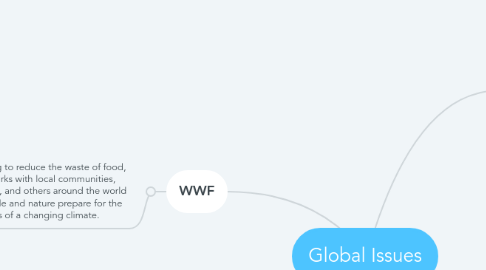Global Issues
by David Huynh 10B Silkeborg Ungdomsskole

1. WWF
1.1. They're trying to reduce the waste of food, and WWF works with local communities, governments, and others around the world to help people and nature prepare for the many impacts of a changing climate.
2. New Words/Key Words
2.1. Smilodon, euphoric, elated, pesticides and fertiliser.
2.2. Modern humans, environment, negatively,
3. A sustainable future
3.1. Human activity is a huge factor when talking about a sustainable future. Everything we do will have an impact on the planet. Food, transportation, energy are the biggest factors and most impactful of them all.
3.2. Everyone leaves an ecological footprint on Earth. If you use a lot of water, electricity, go on vacation a lot, eat meat, get food from other countries, or even heat your house with oil and fuel it will lead to you a leaving a huge ecological footprint.
4. Reasons for extincion
4.1. The Smilodon went extinct because of the change in climate. It's natural habitat was in the cold, but as the ice age ended there wasn't any cold left. It became hot and the Americans hunted it down.
4.2. Humans doesn't only hurt the animals by hunting them down, they also hurt them by destroying their habitats, things like cutting wood down could lead to the animals not having food and or a shelter.
4.3. Another reason could also be pollution. Pollution can affect the animals by getting them sick, getting their offspring sick and it'll make it harder for them to find food.
4.4. And finally, humans cause extinction by putting an animals outside of its natural habitat/a new territory
5. garbage stuff
5.1. The garbage patch mainly consists of plastic. For example, fishing line, bottles, bottle caps, six pack rings, grocery bags, flip-flops, fishing nets, etc. App. 70% of the plastic eventually sinks to the ocean floor and 30% floats on the ocean surface.
5.2. Plastic cannot biodegrade. It cannot be broken down by nature and transformed into something else. Sunlight breaks the plastic down to ever-smaller pieces, but it never disappears entirely. More than 90% of the plastics in the oceans are smaller than your
6. PS. Sorry it's not organized, I still don't know how this works.


